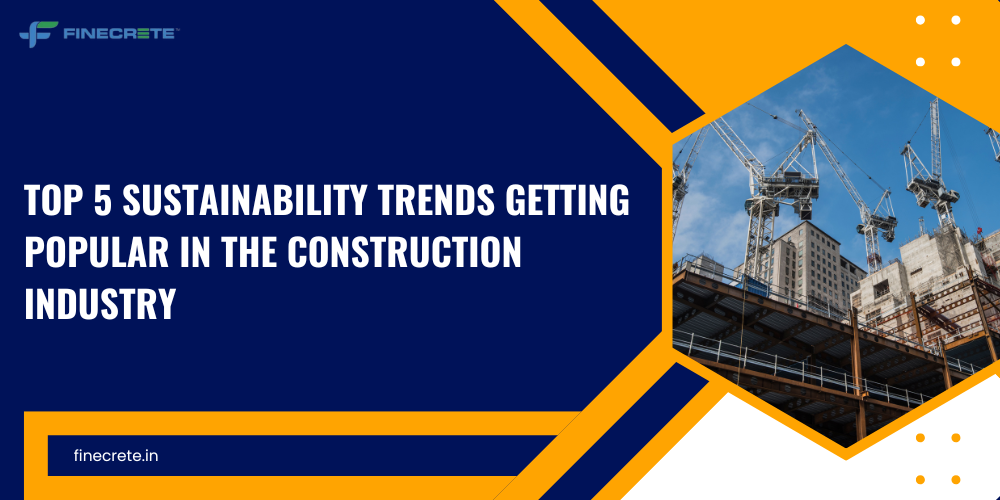In 2024, the construction industry is undergoing a transformative shift towards sustainability. There is more focus on combating climate change and reducing carbon footprints. Naturally, more and more construction material building manufacturers/ builders are increasingly adopting innovative, sustainable practices. Know the top 5 sustainability trends that are gaining traction in the construction industry.
Embracing Green Roofs and Green Building Materials
This is one of the most significant trends in sustainable construction today. Green roofs, which are covered with vegetation, have numerous benefits such as:
- Improved air quality,
- Reduced urban heat, and
- Better biodiversity
These also help manage stormwater runoff and can reduce energy costs with natural insulation. With the use of eco-friendly building materials such as Autoclaved Aerated Concrete (AAC) blocks, reclaimed wood, bamboo, and low-VOC (volatile organic compounds) paints, it is possible to reduce the environmental impact of construction and make indoor environments healthier.
Net Zero Buildings
Net zero buildings help produce as much energy as they consume over a year. This makes them a key trend in sustainable construction. Typically, it is possible to achieve this objective through a combination of energy-efficient design, renewable energy sources, and advanced building technologies.
The features like solar panels, high-performance insulation, and energy-efficient windows are standard in net zero buildings. Organizations and governments set ambitious targets to reduce greenhouse gas emissions. Net zero building practices are set to be more widespread in the coming years.
Use of Recycled Steel
Steel is one of the most recycled materials in the world. The use of recycled steel in construction significantly reduces the need for new raw materials. It helps conserve natural resources and reduce energy consumption.
Further, recycled steel is often stronger and more durable than its virgin counterparts. This makes it perfect for structural applications. With the growth in demand for sustainable materials, the use of recycled steel is likely to become more prevalent in construction projects.
Adopting Circular Economy Principles
The circular economy model focuses on the reuse, recycling, and repurposing of materials, which can help to minimize wastage and extend the life cycle of products. Adopting circular economy principles involves designing infrastructure and buildings with the end of their lifecycle in consideration.
With this approach, the use of modular construction techniques is encouraged. It helps to disassemble and reuse components easily, reducing waste generated during demolition. It allows builders or construction project owners to reduce environmental impact and improve their bottom lines.
Prioritizing Resilient and Adaptive Design
Extreme weather events and instances of climate change are becoming increasingly evident. Naturally, the construction industry is focusing more and more on resilient and adaptive design. This trend involves creating buildings and structures that can withstand environmental challenges, such as flooding, hurricanes, and rising temperatures.
Resilient design includes elevated foundations, storm-resistant materials, energy-efficient systems, and various other features. Adaptive design adds to this by creating flexible spaces that can be easily modified to meet changing needs over time. When resilience and adaptability are prioritized, the construction industry can make buildings sustainable and functional.
With the growth in demand for eco-friendly construction practices, it is necessary to embrace these trends to ensure a more resilient environment for the future.






